Federal Glass Company made beautiful pieces of glass between 1900 – 1979. But how can we recognize a piece of glass as vintage Federal Glass and how much can it be worth?
Most Federal Glass pieces sell for between $7 – $20. Some pieces with rarer patterns and colors may sell for $100 or more, and only a few VERY rare Federal Glass pieces have sold recently for over $1,000. Identifying Federal Glass involves knowing the patterns and colors of their designs, as many of their items did not include a maker’s mark.
Read on to learn more about identifying and valuing antique Federal glassware pieces.

Identifying Federal Glass
There were various companies that made glass in the 1900s, but identifying glass from a specific company such as The Federal Glass Company is not as hard as it seems. For one, if you raise the glassware and are able to see a capital letter ‘F’ inside a shield, that would be Federal Glass Company’s hallmark or marker’s mark.
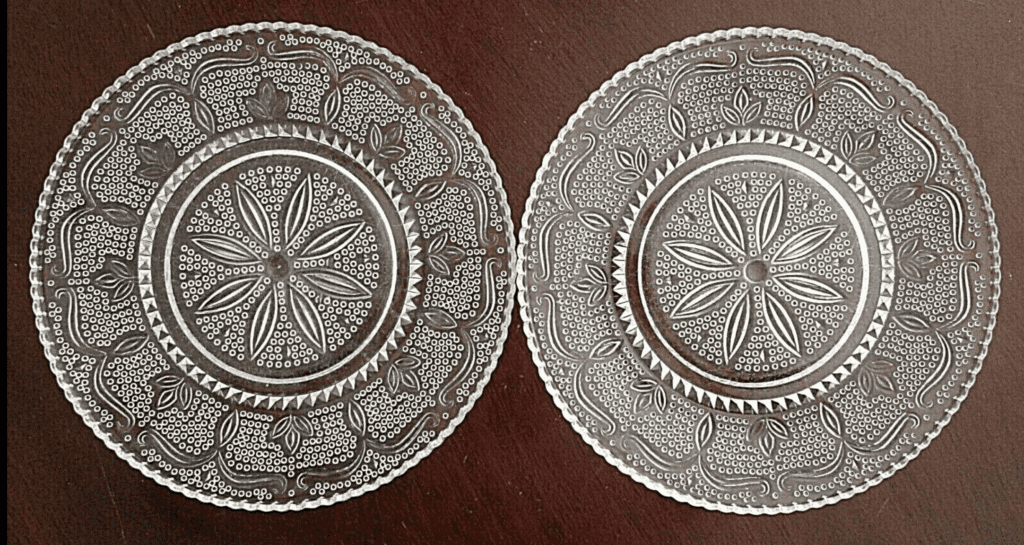
However, not all of the glass produced by Federal Glass Company has a mark. The best bet would be to learn the most common Federal Glass patterns and colors. As you familiarize yourself with those, the more likely you’ll be able to recognize and identify true Federal glass. Pictures of some of the most popular patterns are included throughout this article.
Identifying Federal Glass by Pattern or Color
It doesn’t take a whole lot of research to find the most common patterns that are available in Federal Glass. Another cool thing about identifying by a pattern is that most patterns typically only came in specific colors as well. While a few popular patterns are mentioned below, check out our complete guide to Federal Depression Glass Patterns here.
The Madrid pattern was originally made or found on glassware such as dinner plates, cups and saucers, grill plates, and a few others. The pattern itself seems to look almost paisley-like in design. The Madrid pattern comes in the colors of amber yellow, pink, blue, and clear (described as ‘crystal’ normally) glassware.

Note that with the Madrid pattern, Indiana Glass Company bought the molds when Federal Glass went bankrupt, and they did continue to produce this pattern as Recollection. It may be difficult to determine whether a Madrid pattern item is an original vintage Federal Glass Company item or if it was produced by Indiana Glass Company. Check out this article to help determine the difference.
The Diana pattern is one of the few geometric patterns that the Federal Glass Company made, having a swirled ribbon-like or ribbed pattern. The ribbed swirl is rounded and thin, and some of the glassware in this pattern have a center. If it has a center it’s swirled separately from the rest of the pattern. The Diana pattern was mostly made in clear or crystal, pink, amber, and sometimes even green-colored glass.

The glassware found with this pattern would typically be things like dinner plates, sherbet plates, and others. This pattern can also be found in demitasse sets, which are doll-sized dishes. These sets would include little cups and saucers; The cups are less than 2 inches in height to give an idea of sizing.
The Georgian pattern is one of the most popular patterns that Federal Glass Company made, and was one of their higher-priced patterns. It typically came in green, but some reference books state that a few pieces were made in crystal (clear) and amber.
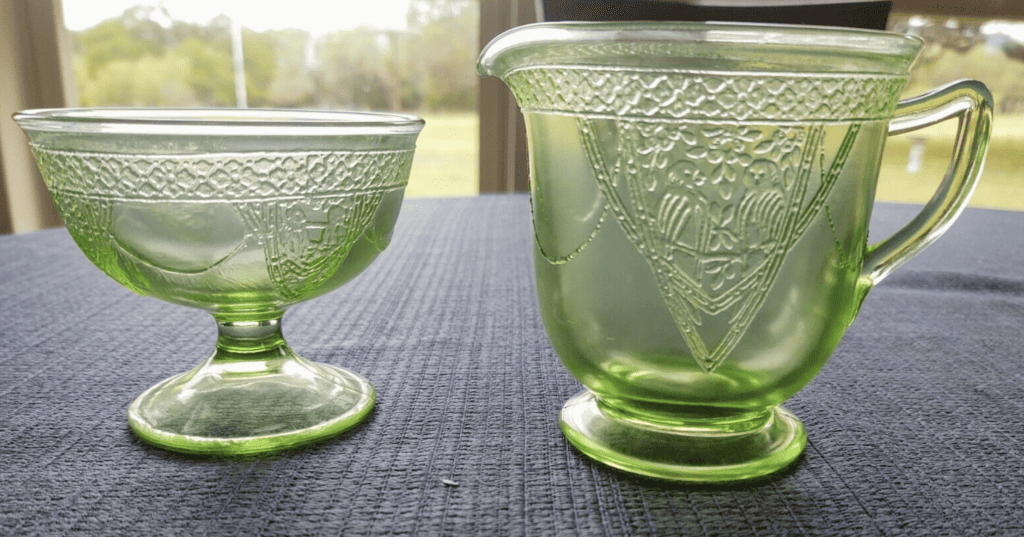
The Georgian pattern consists of rounded triangle cartouches framing two birds alternating baskets. The triangles are connected by draping greenery and each center has a medallion-like design. Because of the birds in this pattern, it has also been dubbed as the “Lovebird” pattern.
The Normandie pattern is the only depression-era glassware that can be found with an iridescent shine to it. It can typically be found in an iridescent color known as ‘sunburst’. It came in non-iridescent colors such as amber and pink, although these colors are harder to find, especially if you’re looking for specific dinnerware objects in one of these shades.
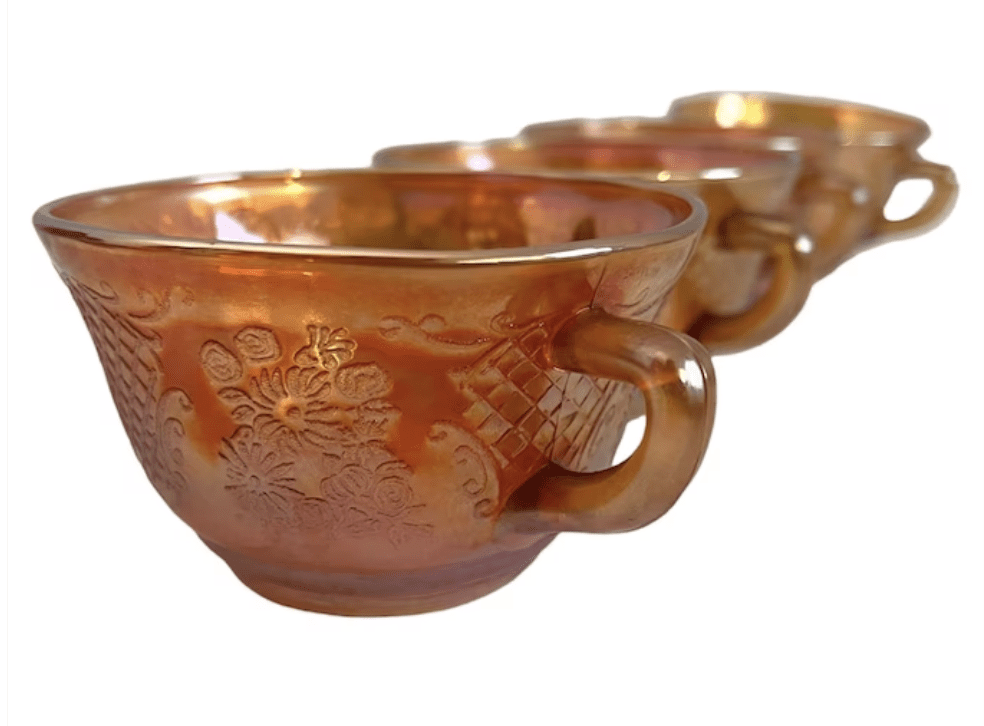
The pattern is an intricate lattice with some side floral design, which is only enhanced by the color it can be found in. Due to its pattern, it is also commonly known as the “Bouquet and Lattice” pattern. The Normandie pattern doesn’t have as wide a variety of pieces – especially in the decorative area – as some of the other patterns do. However, it can be found available on dinner plates, grill plates, cups and saucers, pitchers, and a few other dinnerware objects.
The Sharon pattern, also known as “Cabbage Rose”, was one of the most popular Federal depression glass patterns. It was produced in pink, green, amber and crystal, but pink was most popular.
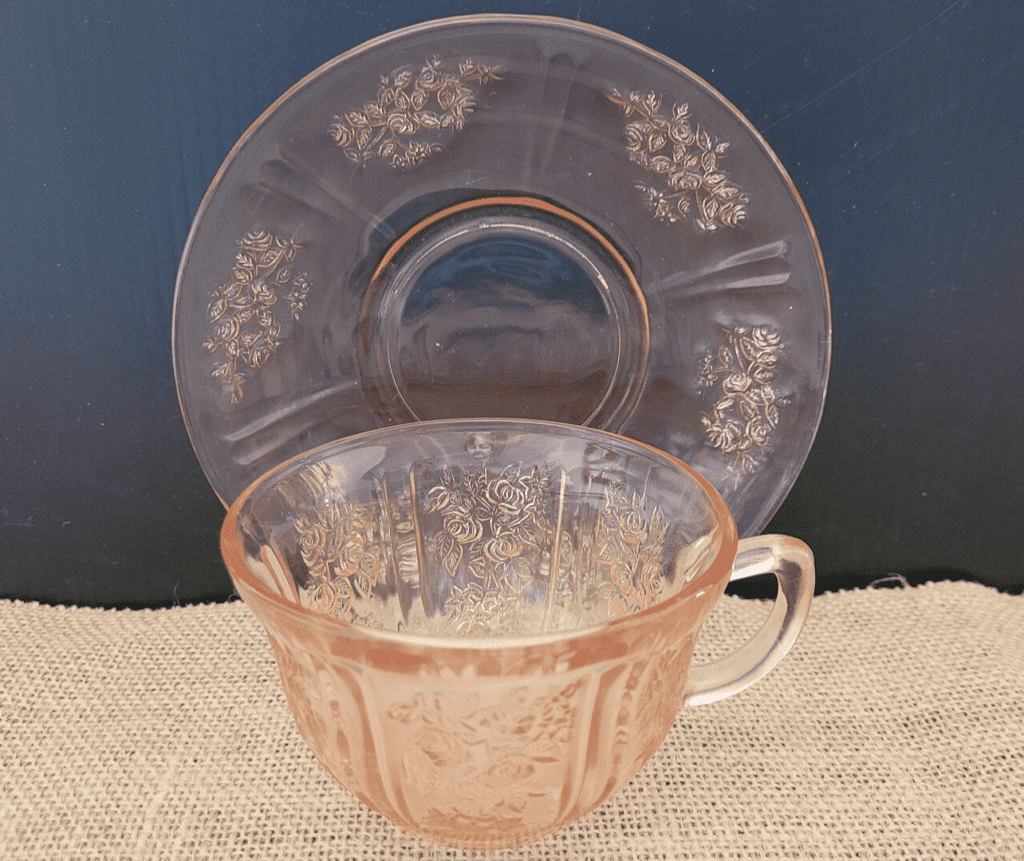
After the depression era, Federal Glass Company made several other popular designs, mainly in crystal (clear) glass, including Park Avenue.

In the 1950s, Federal Glass company began collaborating with designers such as Eva Zeisel. They made some really fun and funky MCM drinkware and barware, most often clear glass tumblers with colored or gold details, such as the glass tumblers shown below.
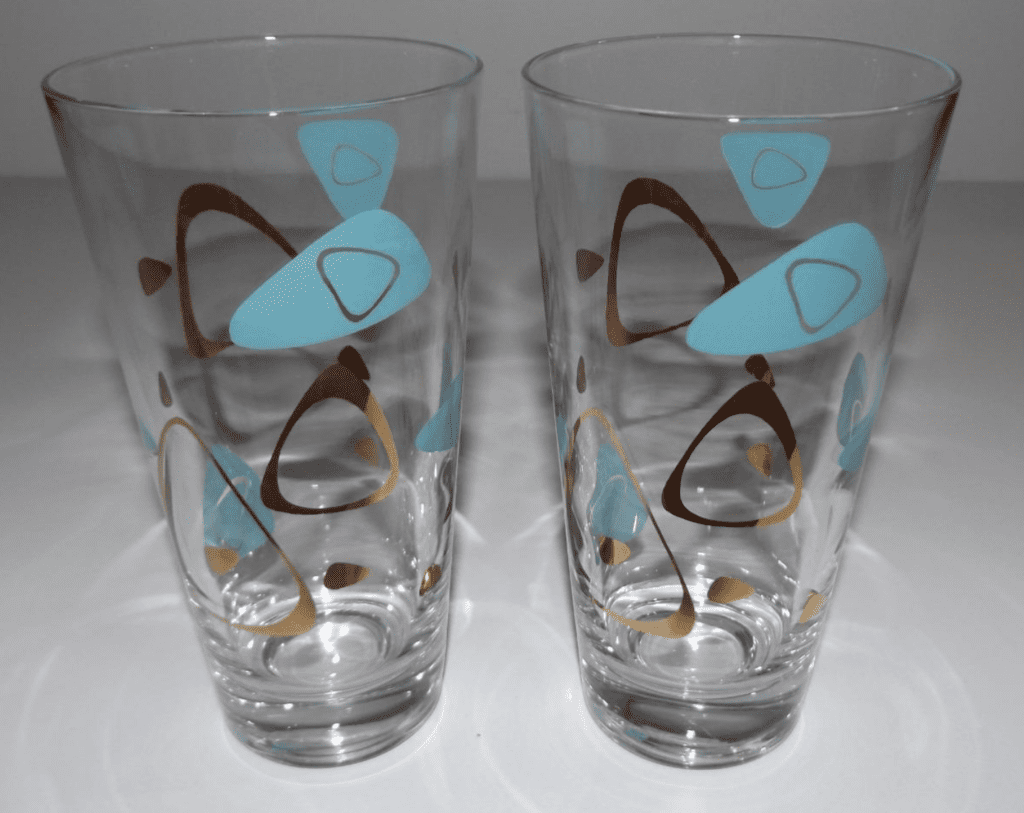
In the 1960s, Federal Glass Company did make some opaque glassware, some with retro Mid-Century Modern (MCM) patterns, such as atomic starburst. Many of these items were marketed as Heat Proof.
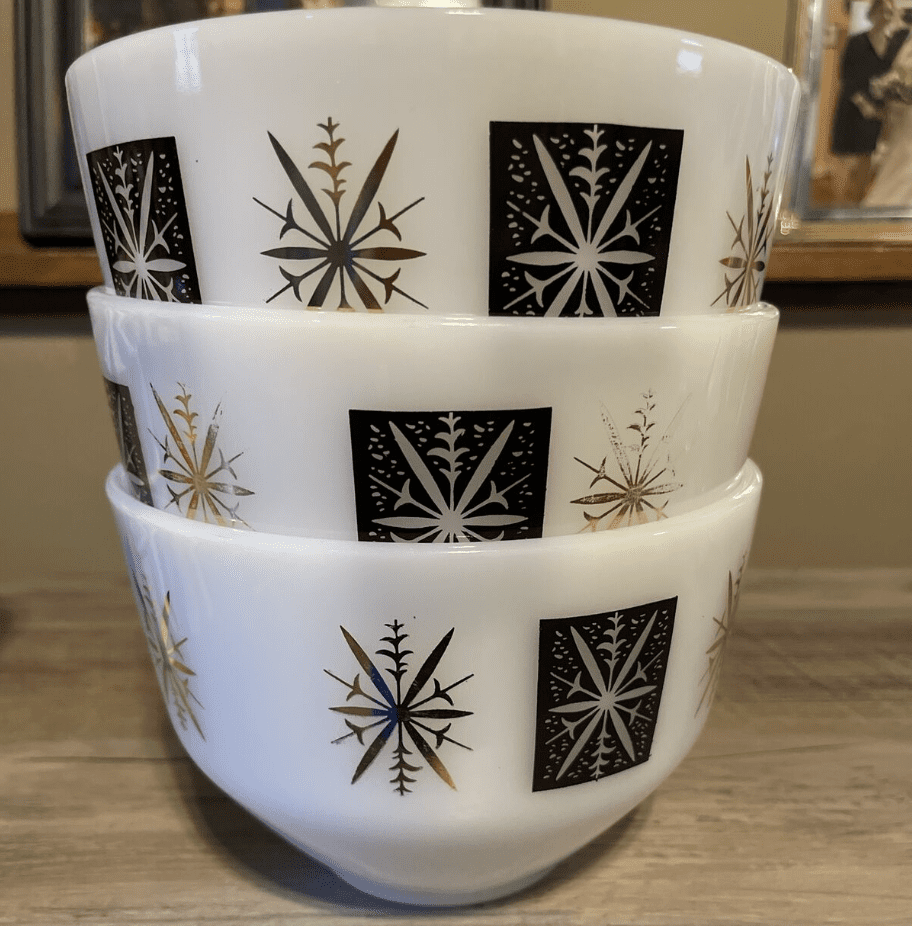
Dinnerware sets were made in an iridized opalescent finish that Federal called “Moonglow.
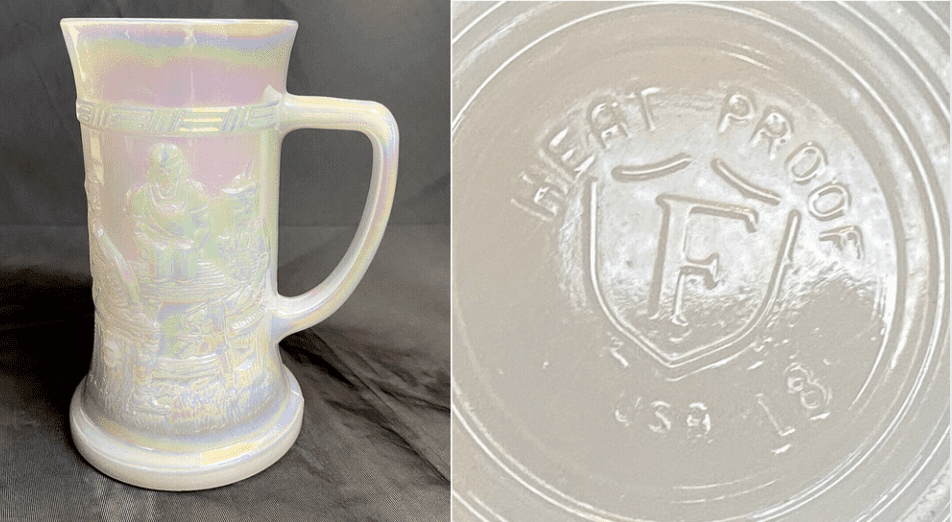
In their last decade of existence in the 1970s, Federal Glass collaborated with designer Joan Luntz to create 10 new signed tumbler designs.
Determining Federal Glass Value
To determine the value of the glass can depend on a couple of things. Coloring can affect worth – or at the very least the price that it can be bought at – as well as pattern. The type of glassware piece it is – plates versus cups and saucers type of thing, or even decorative pieces like candleholders – will also determine worth or pricing. And of course, worth and pricing would also be determined by whether or not it is an original piece or a recollection or reproduction or fake.
Since the product became popular during the Great Depression, Federal Glass depression era pieces are typically more affordable pieces of glassware. Most Federal Glass depression glass pieces can be found for $5 to $20. Some of the larger or more rare pieces can sell for between $50 to $100 or more.
Though very rare, there have been a few Federal Glass depression era pieces that have sold for over $1,000 in recent years, such as a green “Sylvan” pattern (parrot) pitcher, a pink “Sharon” pattern (cabbage rose) covered cheese dish, and an amber “Madrid” pattern gravy boat with underplate. For more information on Federal Glass recently sold data, check out Worthpoint.
Mid-Century Federal Glass items are priced differently than depression glass items. MCM mixing bowls by Federal Glass sell for around $30 – $70 on average. Mid-Century Federal Glass tumblers sell on average for $5-11 each.
What is the Most Valuable Federal Glass?
The most rare and therefore most valuable Federal Glass pattern is the “Sylvan” pattern, also known as the parrot pattern. This glassware features 3 parrots sitting on branches with tree leaves. Don’t confuse this with the other bird pattern produced by Federal Glass, “Georgian” or lovebirds.
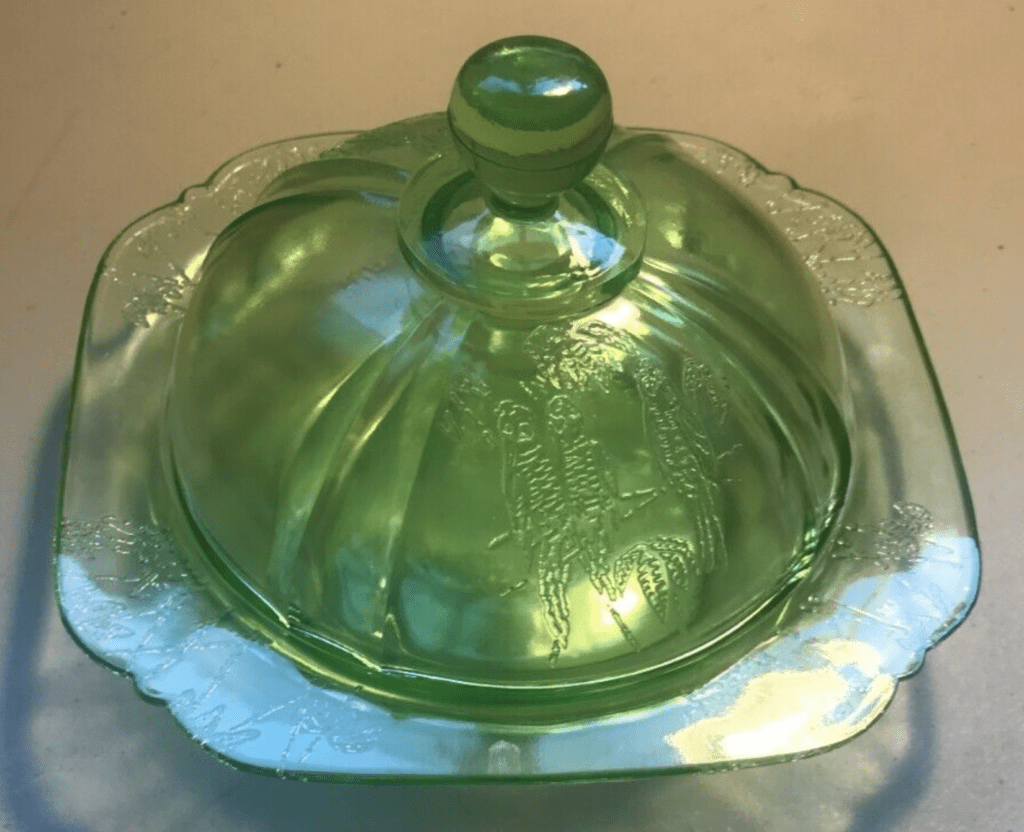
Though not all the pieces in the Sylvan pattern are extremely valuable, certain items such as pitchers, hot plates, and tumbler sets have sold for several hundred dollars up to $3,500!
If you come across any vintage pieces with this parrot pattern, it may be worth looking into! You can check out the most recent selling prices on Worthpoint.
Should I Collect or Sell Vintage Federal Glass?
As mentioned above, most Federal Glass items you’ll come across will be worth less than $25. However, it may be worth keeping an eye out for some of the higher value items, such as Mid-Century Modern barware, mixing bowls and dish sets, or some of the rare depression glass patterns or items.
While catalogs and reference books are great for learning and recognizing patterns as you search for ones to collect, they’re not exactly a great source to learn pricing or worth from. This is mainly because such catalogs and reference books are old enough that any mention of worth or pricing in the description of the specific pattern and piece probably differs from what it is today.
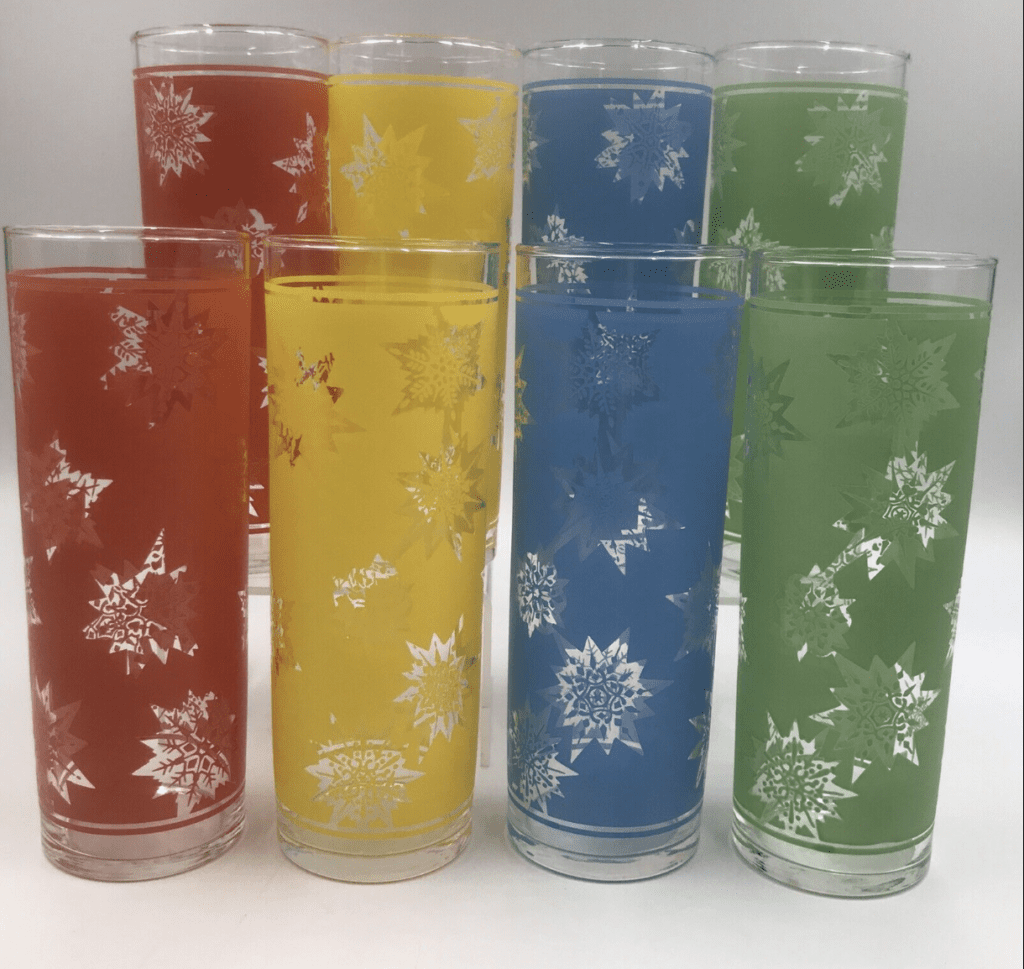
The research could be as simple as going to an antique store or some antique expert and talking to the owner or expert about what price the specific piece or set is worth. You could look at sites such as eBay to see what others are selling pieces for that are similar in pattern and color to yours.
Mercari, Etsy, Poshmark, and other resell sites or antique sites may be good spots to look at as well. Worthpoint is the most thorough resource for determining prices of recently sold items.
If multiple pieces in the same pattern and color are organized in a set, the worth or pricing would go up accordingly. Individual pieces would vary in pricing depending on the pattern, the color, and the type of piece it is. For instance, a candlestick holder in a specific pattern and color may be worth more or priced more than a dinner plate in that same pattern.
Researching the production time of the specific piece or pattern can help determine rarity and lead to a more specific determination of price as well.
Some pricing holds steady throughout the years depending on the piece’s pattern and color available. The most common colors, such as amber, may have kept a steady price more than others. Sets in amber will probably also have kept a steady price or worth/value rate compared to other colors.

